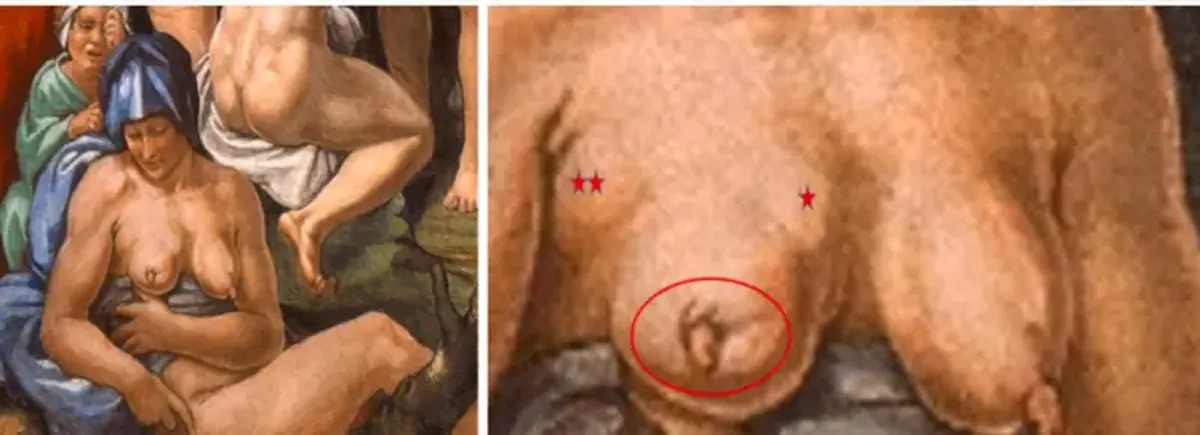
For centuries, believers and travelers visiting the Sistine Chapel have marveled at the frescoes of Michelangelo Buonarroti (1475-1564), a master of the High Renaissance. Among these works is the fresco “The Great Flood” (1508-1512), which depicts scenes from the Book of Genesis. In this masterpiece, you can see doomed individuals who are about to be engulfed by water.
However, one of the 300 figures portrayed by the artist was destined to die without the flood. This was revealed by an international team of scientists.
Researchers from Italy, Germany, France, Austria, and the United Kingdom, specializing in art history, medicine, and genetics, joined forces to diagnose the illness of a semi-nude woman depicted in the famous fresco.
After a detailed examination of the breast details of the heroine shown in the second bay of the ceiling, the scientists concluded that this woman has late-stage breast cancer. The researchers believe that Michelangelo was well aware of the characteristics of this disease and intentionally depicted it.
What You Need to Know About the Discovery
Commissioned by Pope Julius II, the artist painted the chapel in the Vatican with numerous scenes from the Old Testament from 1508 to 1512. At that time, Michelangelo, who was just over 30, was already an experienced artist. Bringing his years of sculptural expertise to this monumental task, he demonstrated an extraordinary level of detail in his work.
Given this, it’s hard to imagine that he accidentally distorted the breasts of the woman in the fresco. To the average viewer, this lady is merely one of the exhausted figures seeking refuge from the waters meant to cleanse the world of sin. For art historians, the blue color of the heroine’s scarf signifies her married status, while her finger pointing to the ground hints at her inevitable demise.

Medical experts focused their attention on the noticeable swellings on the woman’s breasts. According to the researchers, if this image were in a medical chart, there would be no doubt that the patient had breast cancer.
By comparing the details with the physical characteristics of many other figures in the fresco, the team concluded that this narrative element is not coincidental. Michelangelo had a considerable understanding of diseases and death. From his teenage years, he participated in dissections, continually gaining insight into how the human body functions. The researchers do not believe that the artist copied the pathology from a model suffering from cancer. Rather, he likely became familiar with the manifestations of the disease during dissections.
Over the centuries, the ceiling of the Sistine Chapel has undergone numerous restorations. One of the largest took place at the end of the 20th century. By comparing old photographs of the frescoes with the restored versions, scientists confirmed that the original shape and shading of the heroine’s breasts had not changed.
Interestingly, this is not the only instance where Michelangelo focused on illness. Shortly thereafter, he created a female representation of Night for the tomb of Giuliano de’ Medici, featuring similarly deformed breasts. In 2000, this caught the attention of oncologists, as reported by Science Alert.
So why did the artist depict a woman with a terminal illness in the Sistine Chapel? Experts suggest that “the depiction of probable breast cancer is related to the concept of the transience of life and carries a meaning of punishment.”
Thus, this embodiment of sin in the form of a deadly disease remained unnoticed in the Sistine Chapel for many years. The work of these scientists has once again demonstrated that the remarkable understanding of the human body by this great master continues to astonish time and time again. The results of the study were published in The Breast journal.

